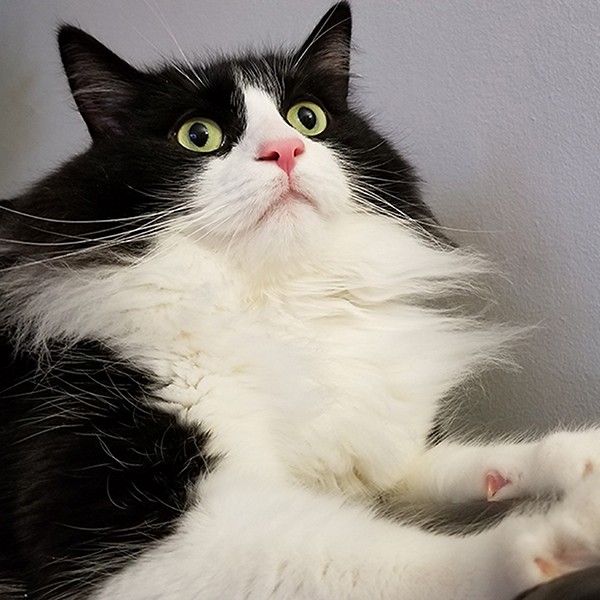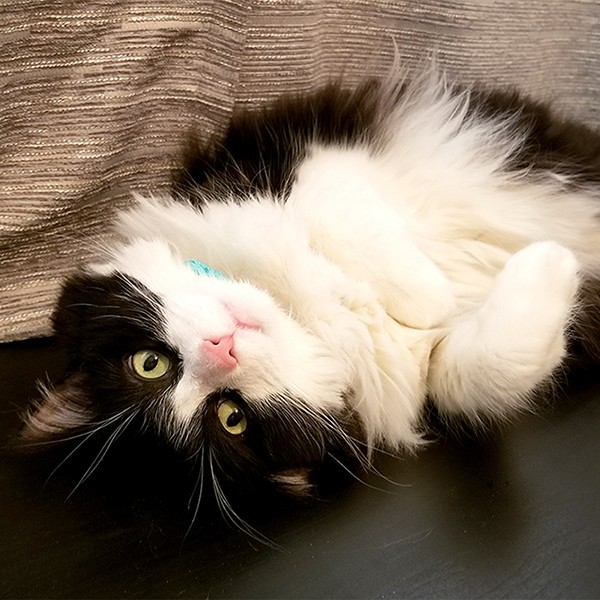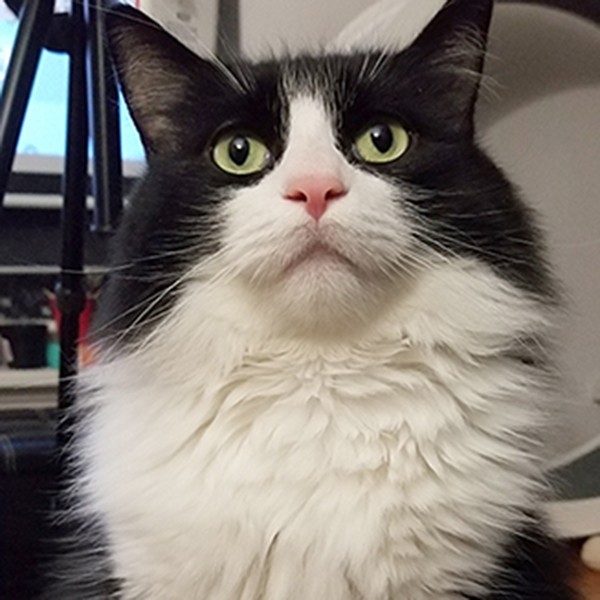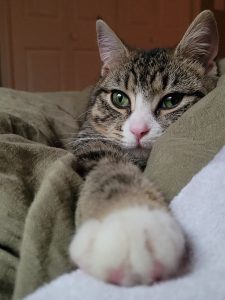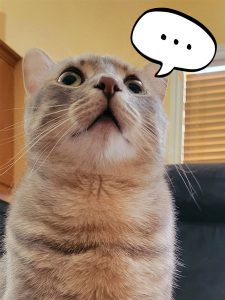
Meet Luffy, our beloved first pet cat—a charming mix of Russian Blue and Turkish Van, as described by his previous owner. As a newlywed couple, we had always dreamed of raising a cat together, though we weren’t actively searching to adopt. One day, a friend told us her acquaintance’s cat had just given birth to six kittens, and asked if we’d be interested in cat adoption. Without hesitation, we said yes.
We patiently waited until the kitten was weaned and ready to eat dry cat food. In the meantime, we visited a pet store and excitedly picked out toys, cozy cat houses, cat litter, canned food, and other essentials. Looking back, we realized Luffy didn’t use most of the accessories, but shopping for our very first cat was such a fun and memorable experience.
In those early days, we turned to YouTube for kitten care tips and advice. From understanding cat behavior to choosing the right cat litter, we learned everything we could. It became our go-to resource, helping us navigate the new and sometimes overwhelming world of cat ownership.
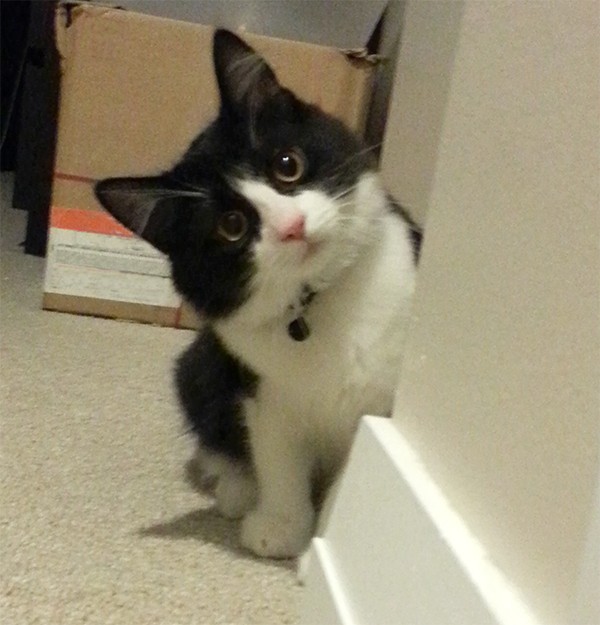
From an adorable kitten to a mature male cat
When Luffy turned six months old, we knew it was time to get him neutered—an important step for his long-term health and well-being, especially as an indoor cat. As first-time cat owners, the idea of sending him in for surgery made us a bit nervous.
The clinic gave us some clear pre-surgery instructions: we were told not to feed him the night before to prevent any risk of vomiting under anesthesia, which could lead to choking. Since Luffy is a sensitive and hissy cat at the vet, we also gave him a small dose of Gabapentin about 4 hours before the visit, as recommended, to help him stay calm during the visit.
Although neutering a male cat is a fairly quick procedure, the vet asked to keep him for a few hours to monitor his post-op recovery. We dropped him off at 8 a.m. and picked him up later that afternoon. Seeing him with a little cone around his head was both pitiful and adorable—his fur flattened around his face, and his eyes looked a bit dazed, but he was safe and healthy.
We kept a close eye on him for a few days, making sure there were no side effects or signs of discomfort. After about a week of wearing the cone, he was finally cone-free and back to being his mischievous, energetic self.
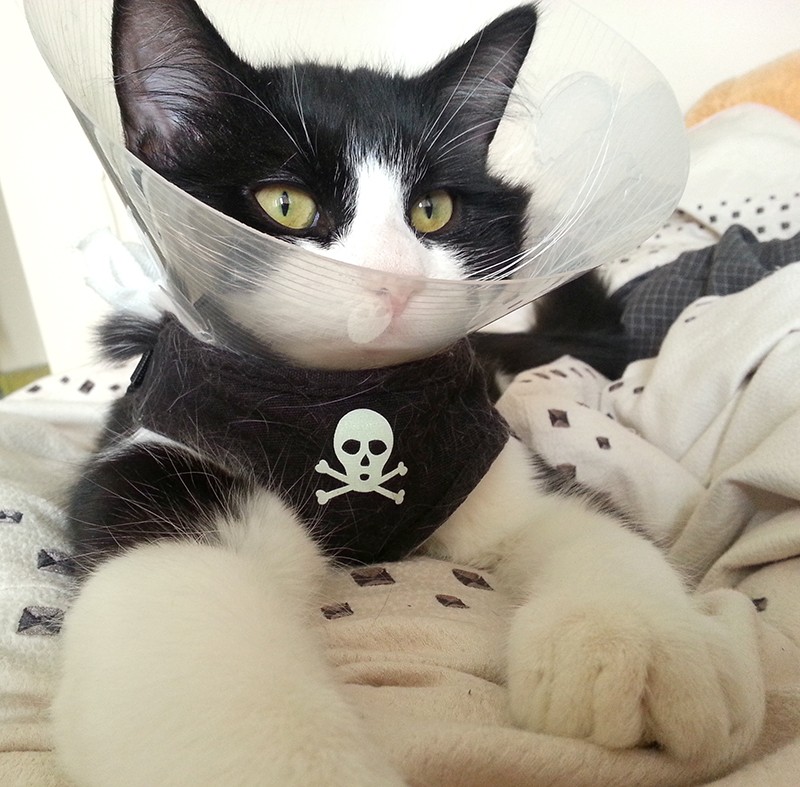
Our journey with Luffy has included plenty of joyful memories, along with a few learning experiences. Around the age of four, we noticed some changes in his behavior—he seemed uncomfortable while using the litter box and was frequently licking his lower area. Since these can be signs of urinary health issues in cats, we brought him to the vet for a check-up to be safe.
The vet diagnosed him with a urinary blockage, which is fairly common in male cats. Fortunately, it was caught early and treated promptly. After his recovery, we were advised to switch him to a specialized urinary care diet to help manage and support his bladder health going forward.
Ever since the incident, we’ve been feeding Luffy a special urinary health dry food with “S/O” printed on the package. “S/O” stands for struvite and oxalate, referring to the food’s ability to help manage and reduce the formation of these common urinary crystals in cats.
We’re not sure if it’s purely because of the diet, or if it’s also the result of trying to keep his daily life as stress-free as possible—letting him nap whenever he wants, watch birds out the window, and always having fresh water available 24/7. But whatever the reason, he hasn’t had another urinary issue since.
And when he pees now? He makes sure everyone knows—his loud, waterfall-like stream has become his oddly proud announcement that everything’s working just fine.
This experience reminded us how important it is to observe even small changes in a cat’s behavior. Regular veterinary care, a proper diet, and paying attention to litter box habits can make a big difference in maintaining a cat’s long-term health.

Before Haircut
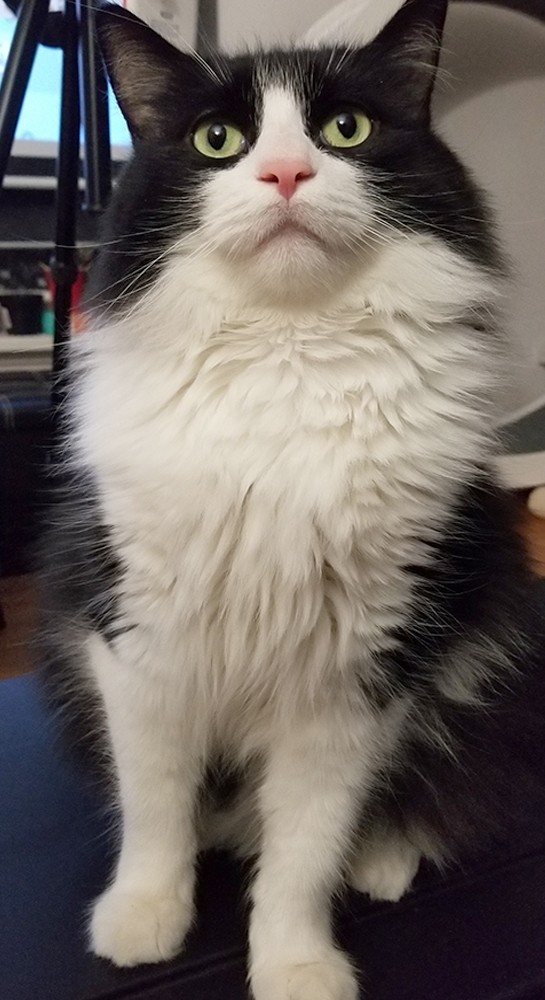
After Haircut

When Luffy was around eight years old, we decided to welcome a new feline friend into our home. At first, Luffy was visibly shocked—after years of having the entire space to himself, the idea of sharing his territory with another cat was clearly not on his agenda.
We took it slow, following a careful cat introduction process over the course of a month. With gradual scent swapping, supervised visits, and lots of patience, they slowly adjusted. While they still hiss at each other from time to time, they’ve settled into a peaceful rhythm—like roommates who occasionally bicker, but also play together and curl up near us on the same soft, warm bed.
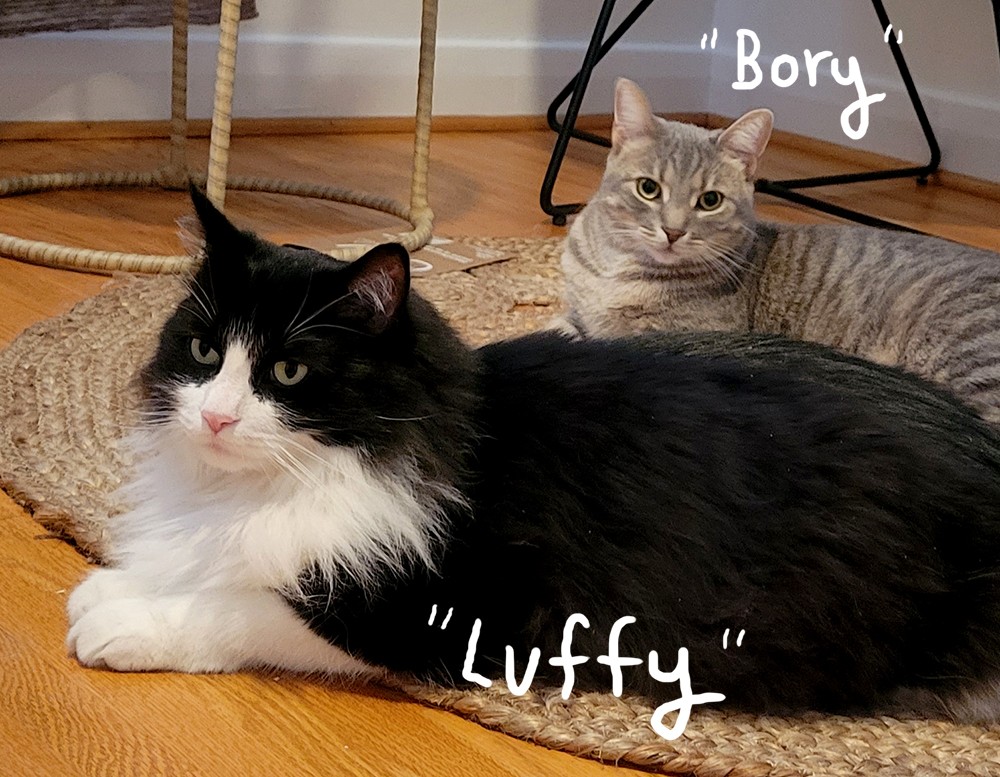
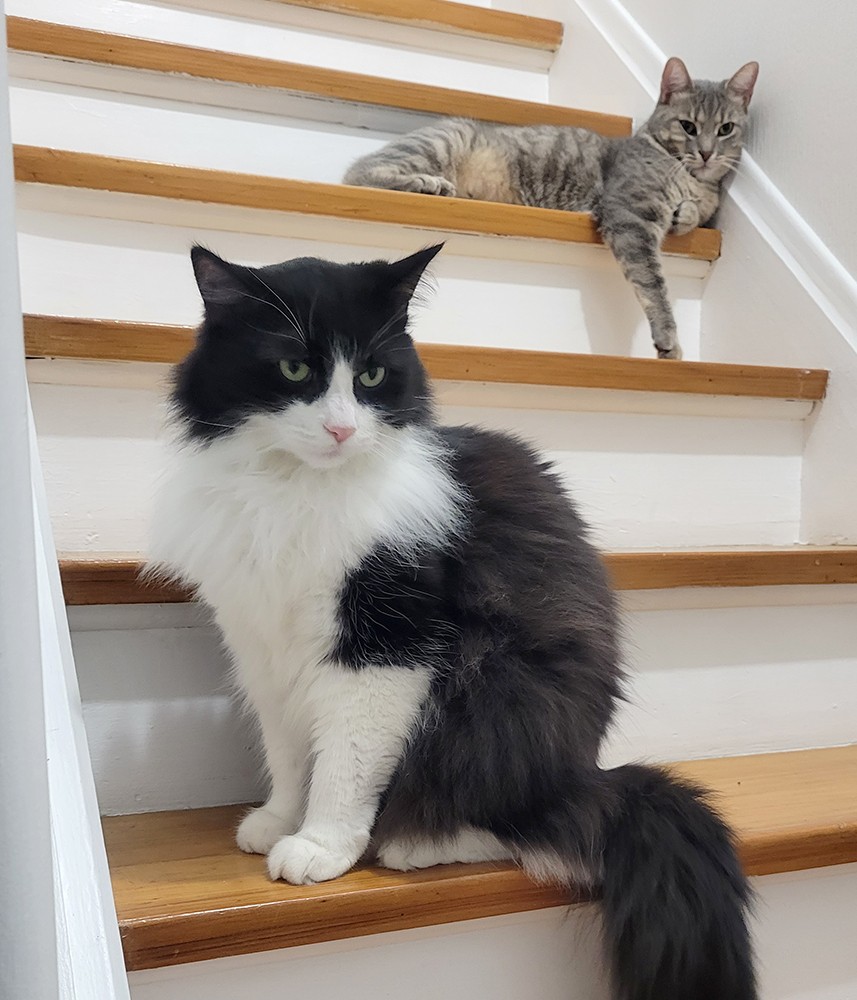

Now living in a spacious rural area, Luffy is truly in his element. He loves the freedom to roam and observe the world around him. One of his favorite spots is by the back balcony door, where he can quietly watch birds take flight, and chickens flap their wings.
Another beloved place is a cozy corner behind my monitor on my home office desk. As I work, he often dozes peacefully there, occasionally stretching his paw across my keyboard. It’s become a daily ritual—me gently pushing his tiny paw aside, making sure not to wake him, while continuing with my work. It’s a quiet, comforting rhythm of working from home with a cat, and one I’ve come to cherish deeply.
